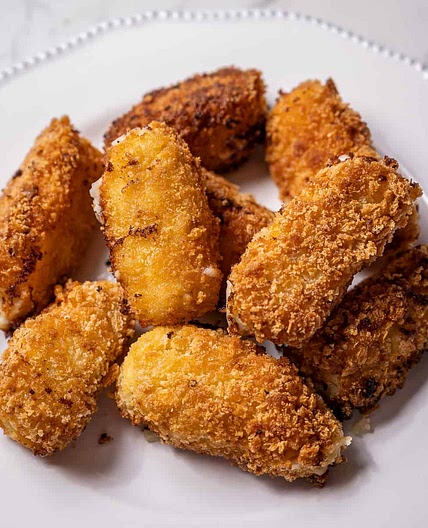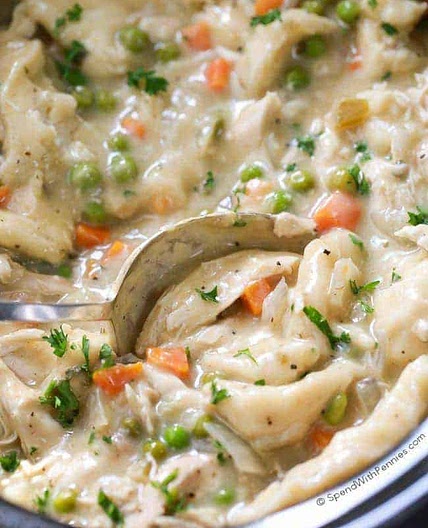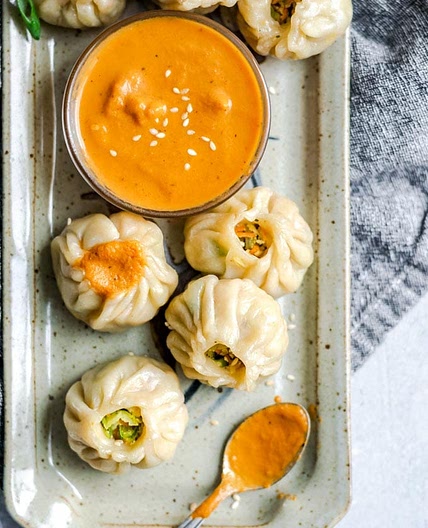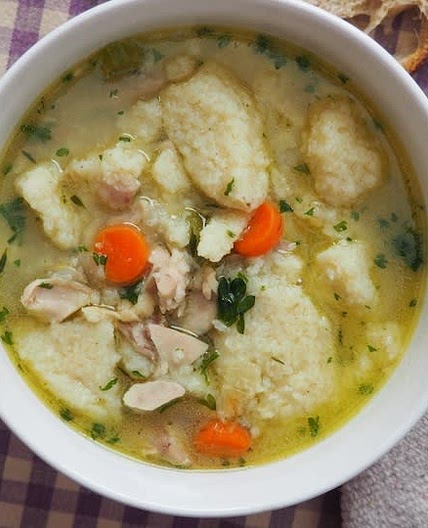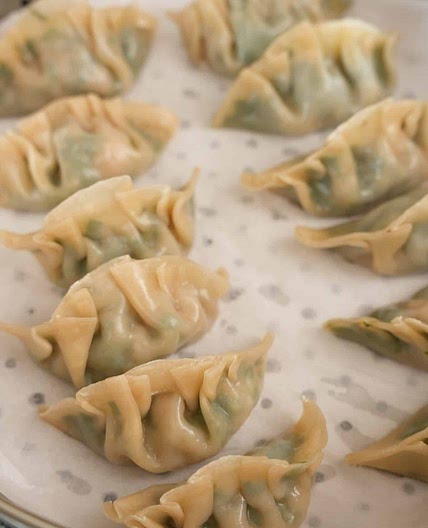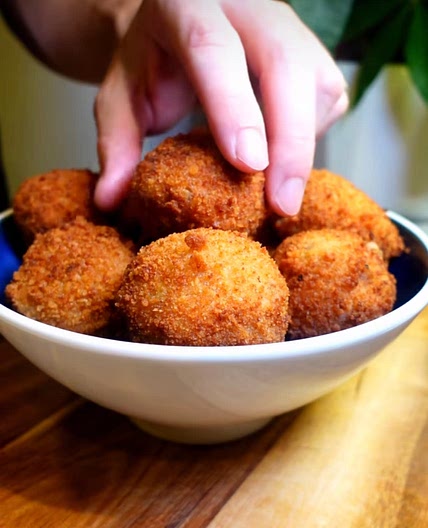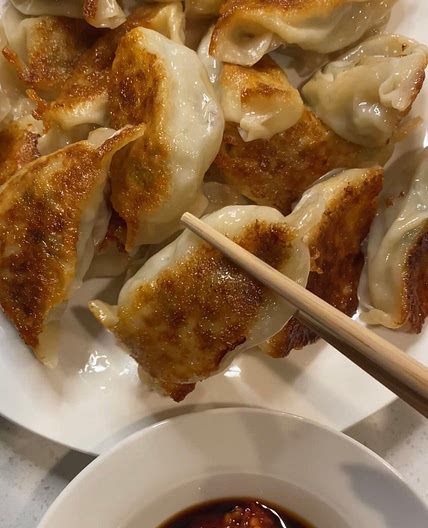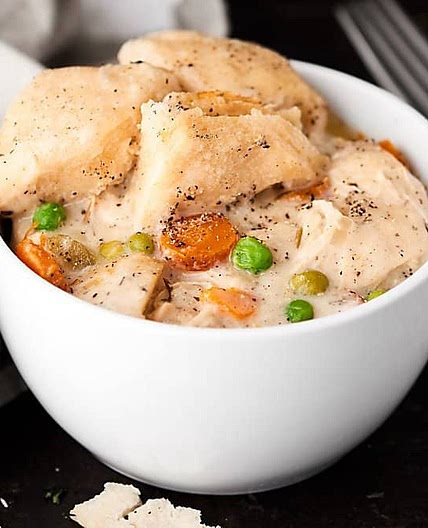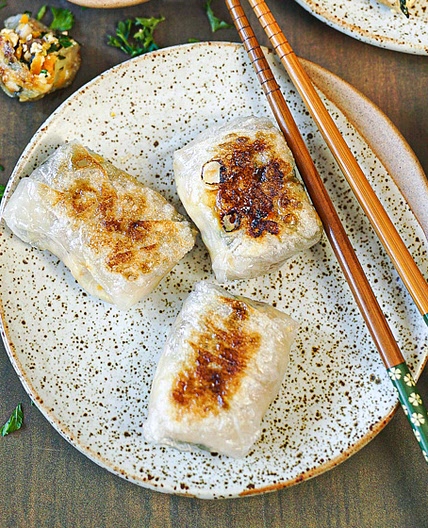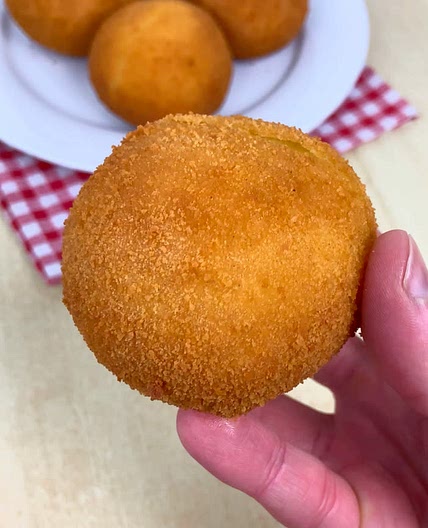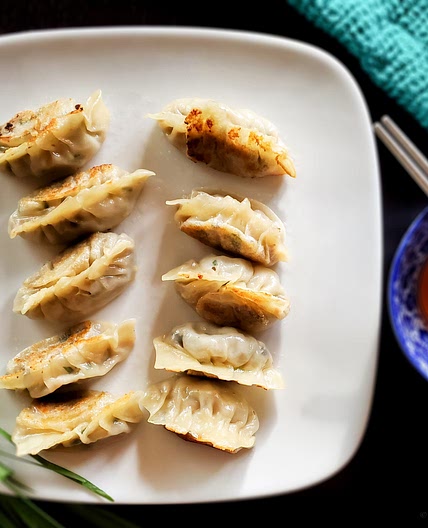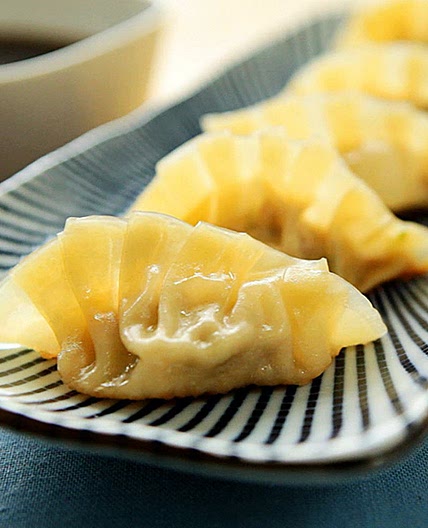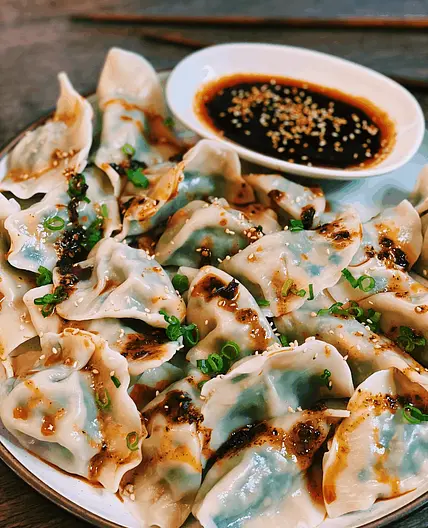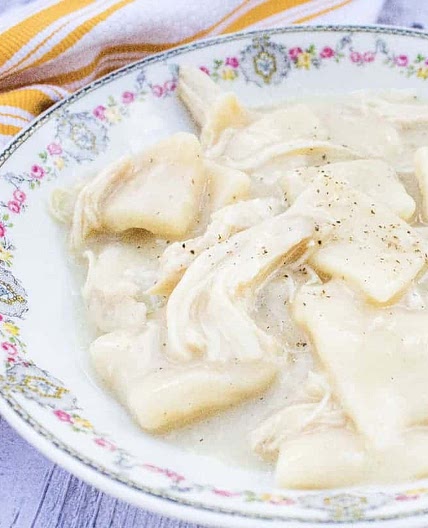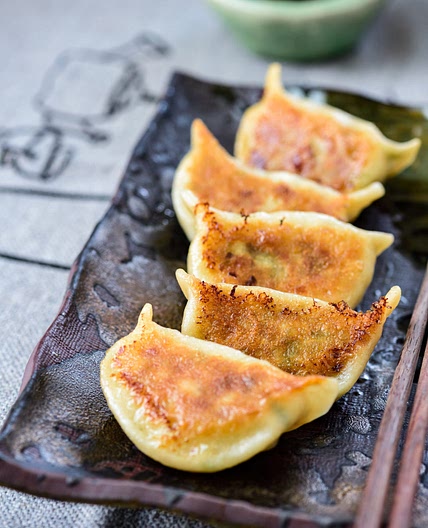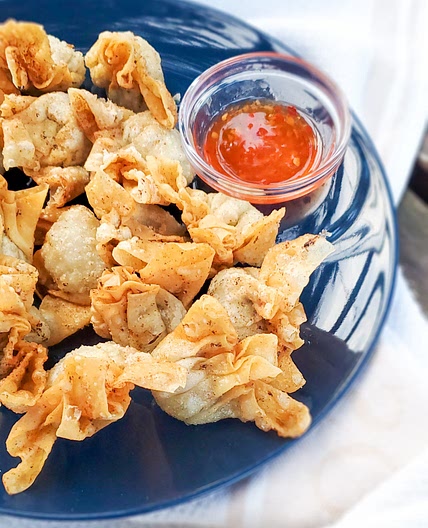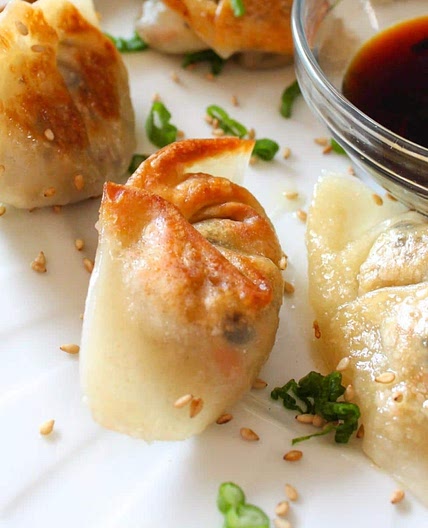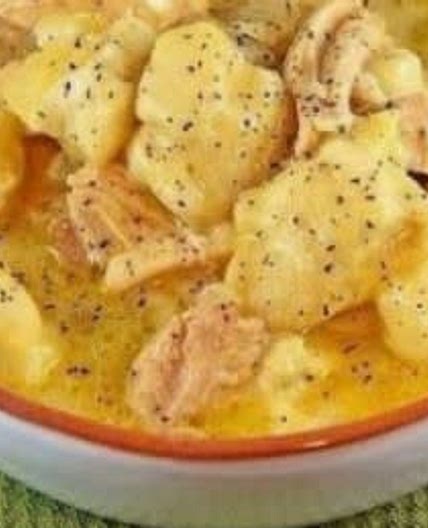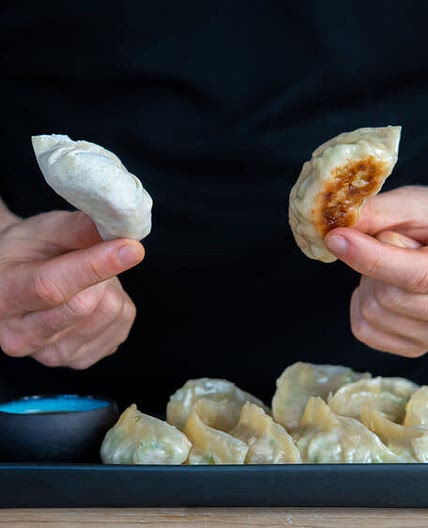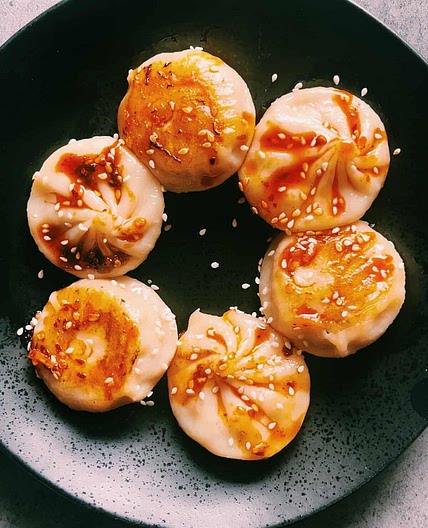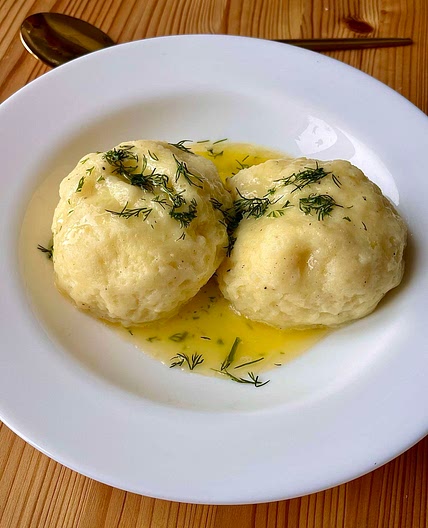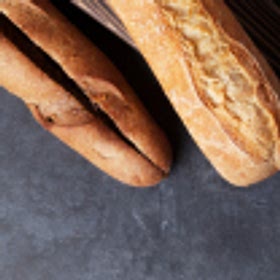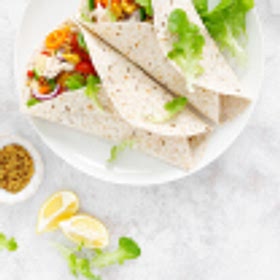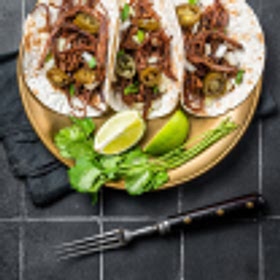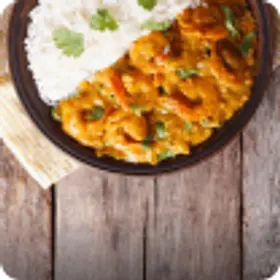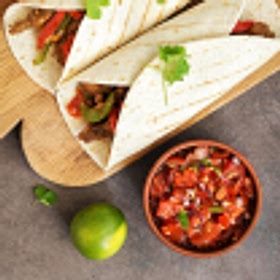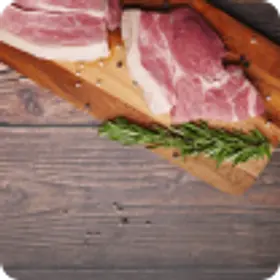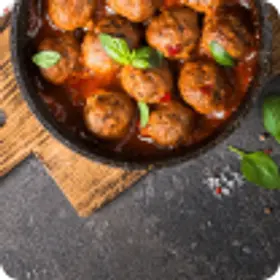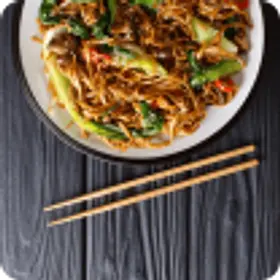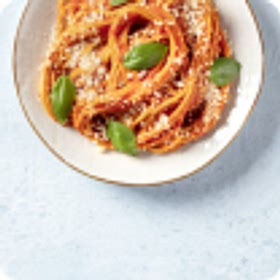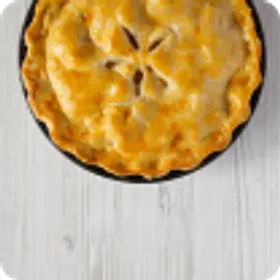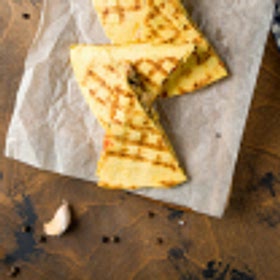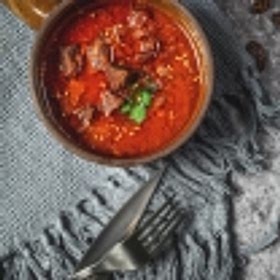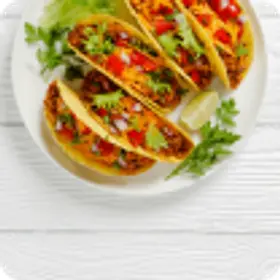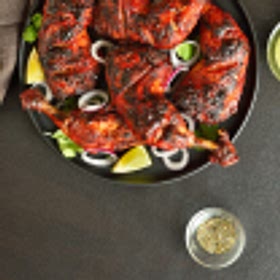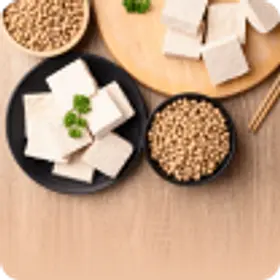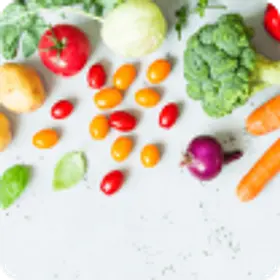100+ Dumplings Recipes
Dumplings are one of the world's most versatile foods. Whether soft and sweet and eaten for dessert, filled with black sesame or bean paste, or wrapped around meat and pan-fried till crisp and golden-brown, almost every country on Earth has a version of the humble dumpling.
Keep reading as we dive into the world of dumplings — what they are, where they came from, and all the ways you can incorporate them into your meals. After all, who doesn’t love dumplings?
What Are Dumplings?
Dumplings are either fried, steamed, or boiled pillows of dough. While many of us think of dumplings as stuffed Asian Dumplings — made with dumpling wrappers, a savory filling, and dumpling sauce — they can actually be as simple as balls of flour-and-water dough dropped into cream of chicken soup. Or piled into a warming stew.
In fact, dropped dumplings, like the chestnut gnocchi with mushrooms by Danilo Cortellini, are close culinary cousins to the Southern-style dumplings many of us know and love.
But there are many, many more types of dumplings than the Asian and American ones we’re familiar with.
Types of Dumplings
To start, there are two broad categories of dumplings:
- Drop dumplings
- filled dumplings
Drop dumplings are simple. Essentially, a dough is formed into balls or strips and (as the name suggests) dropped into boiling liquid to cook until they float to the top. Oftentimes, these dumplings are cooked in stews or stocks, making for a very hearty main course. Sounds familiar? You might know them by different names, but they’re technically still part of the dumpling family tree. These types of dumplings include gnocchi, matzo balls, and drop dumplings from the South.
Filled dumplings usually consist of a wrapper, the filling, and a sauce of some sort. These can then be boiled, steamed, or pan-fried. They could be eaten alone, as appetizers, or as side dishes to accompany a main course. Sometimes they’re even desserts. The fillings and sauces are limited only by your imagination.
But aside from these two main categories, dumplings can also be further divided by shape, size, filling, dough, and cooking method.
Dumplings Shapes
Dumplings come in various shapes. potato and cheese pierogies are half-moon shaped potato-filled dumplings from Poland that are typically served with sour cream and sauteed onions. While they’re traditionally boiled, they can also be pan-fried in butter and/or oil to develop a crispy exterior.
Homemade ravioli are medium-sized, square pockets, made by rolling out pasta dough into thin pasta sheets resembling lasagna. Then, fillings of cheese, ground meat, sausage, or vegetables are portioned across the sheet. The individual ravioli are sectioned off by hand, crimped shut with a fork, and cooked in salted water until they’re al dente. Normally, they’re served with a simple sauce.
Har gao and shiu mai are spherical, steamed dumplings from Hong Kong-style dim sum. Served family-style in bamboo steamers, they’re filled with shrimp, rice, and Chinese sausage. While there are over 2,000 other dishes in dim sum alone — many of which are dumplings — these two are perhaps the most well-known.
Size
Another surprising variation in the dumpling world is the size of each type of dumpling. Cantonese steamed custard buns are roughly the size of a muffin, about 3.5 inches in diameter, while classic American dumplings are barely bite-size. And we all know that gnocchi dumplings are neat and small too. So really, it’s up to you whether you want a one-bite wonder or not. They’re all still dumplings!
In fact, if dumplings are loosely defined as pockets of dough that are filled and then fried, steamed, or boiled, then even these Mexican pork tamales could be considered dumplings.
Filling
Over a century ago, an enterprising restaurant owner, Huang Mingxian, created the world’s first Chinese soup dumpling (Xiao Long Bao) in order to attract new customers. This miniature bun was filled with aspic, which turned into soup once it was exposed to steam. To avoid burning their mouths with hot broth, guests bit off the delicately pleated top, allowed the soup to cool, and filled the soup spoon with black vinegar.
Soon, this novel dumpling spread from a neighborhood Shanghai restaurant, to Japan, and into the US through Los Angeles. Now, where there is dim sum and har gao, you’re sure to find xiao long bao, too.
While many dumplings are filled with savory fillings, some dumplings are more like desserts. Whisk Chinese food creator @CookingWithShanShan makes these black sesame-stuffed dumplings for dessert and these pork and cabbage stuffed dumplings as part of the main course to celebrate Chinese New Year.
Dumpling Wrappers and Dough
Aside from a simple dough, made with flour and water, other cultures around the world have used many different types of dumpling wrappers. From thin wonton wrappers that allow the meat and vegetables to cook evenly in the broth or hot oil, to fluffy, bread-like wrappers of Cantonese custard buns, the type of dumpling wrapper you use determines the appropriate cooking method for that dish.
Dumplings made with wheat flour wrappers are fairly forgiving if your dumpling wrapping technique isn’t perfect. But dessert dumplings, like mochi or the black sesame-stuffed dumplings above, are wrapped in glutinous rice flour, also known as sweet rice flour. While this makes them very delicious, it’s also much more time-consuming to make. So if you decide to make green tea mochi from scratch, carefully follow the instructions and pre-measure all your ingredients before you start.
Cooking Methods
While most dumplings are either steamed, boiled, pan-fried, or deep-fried, these Guatemalan empanadas de manjar de leche are baked. After the dough is mixed, they are rolled out into circles, filled with a spiced custard, dusted with powdered sugar, and baked until the bottoms turn golden.
But pork and scallion potstickers – and most other potstickers too – require all three cooking methods. Potstickers are first flash-fried in a small amount of oil. Then, water is added to cook the filling and pan-fried for a final time to develop the crispy bottoms they’re famous for. While you can fill potstickers with anything from chicken and mushroom to beef and onion, the most traditional filling is pork.
Finally, wontons are made with very thin wrappers. These nearly paper-thin wrappers allow the meat and seafood fillings to cook through and absorb all the aromatic flavors of the wonton soup broth base. People have also been known to deep fry these for a crispy bite-sized dumpling morsel.
Sauces for your Dumplings
Aside from gravy, sour cream and chives, mushroom sauce, and tomato sauce, there are also eight other dumpling sauces you can experiment with if you’re making Asian dumplings.
From the light flavors of a classic soy ginger sauce, to the familiar plum, aka. Duck sauce, trying out dumpling recipes and finding a sauce that pairs well with it is half the fun. But really, you can use whatever sauce you like. Some people swear by dipping them in sweet chili sauce, others prefer something salty, and some dumpling fans will only use a hot chili oil.
Where Did Dumplings Come From?
Dumplings originated in China during the Han dynasty. Zhongjing, a traditional Chinese medicine practitioner, made steamed pillows of dough filled with meat, herbs, and chilis to help his people endure the bitterly cold months.
From that point on, some version of the dumpling could be found in almost every culture across the globe. For some cultures, dumplings ensured that any excess grain didn’t go to waste, while others made dumplings as a way to preserve meat and make meager rations stretch further.
Fun Facts
Dumplings were originally meant to be eaten in one bite. Over time, as food and cultures evolved, dumplings grew to include foods like tamales, empanadas, steamed custard buns, and mochi. Now, the word “dumpling” can refer to filled pockets of dough or balls of dough that are fried, steamed, or boiled.
Did you know? There are actually more than 35 different kinds of dumplings that crisscross the globe? Variations on the dumpling theme can be found in India, Italy, China, Korea, Vietnam, Georgia, the Czech Republic, Malta, and Russia?
Wrapping Up
Dumplings are an incredibly versatile dish that can be filled with just about anything you can imagine. Whether you need something sweet to pair with your morning cappuccino or a hearty, stick-to-your-ribs stew to keep you warm through a winter storm, there’s probably a dumpling recipe for you.
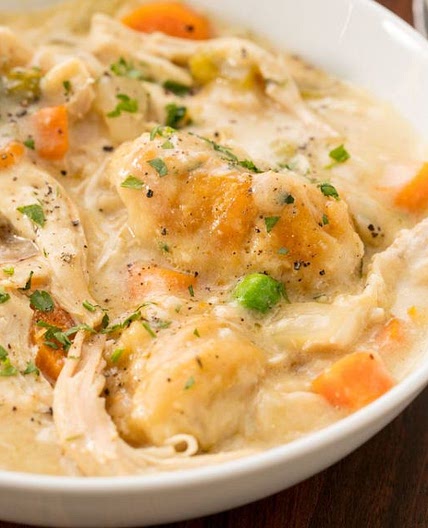
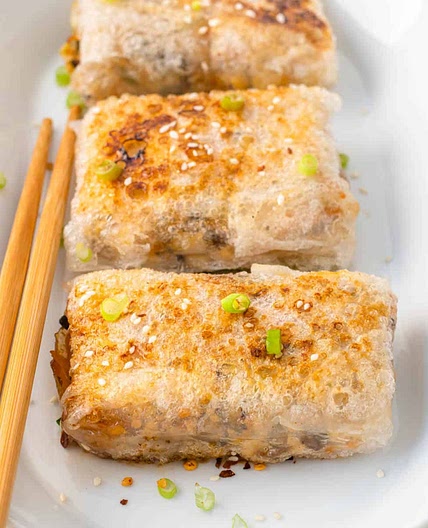

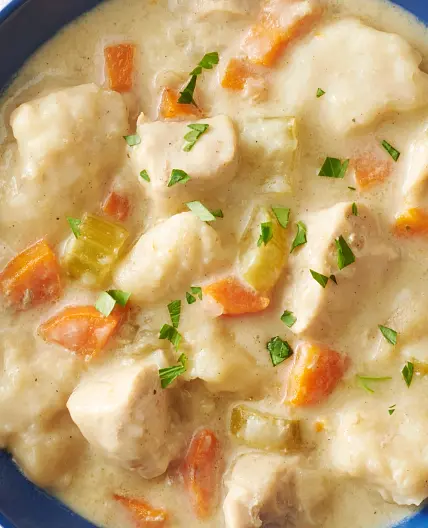



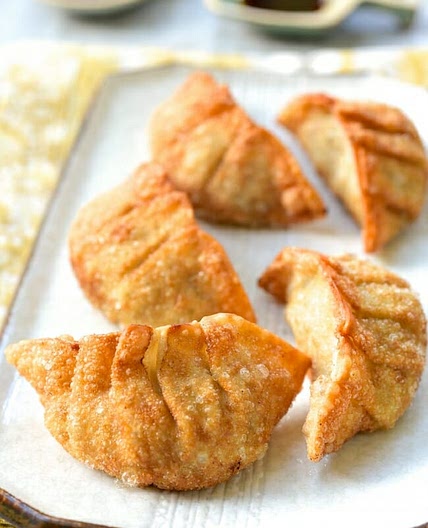
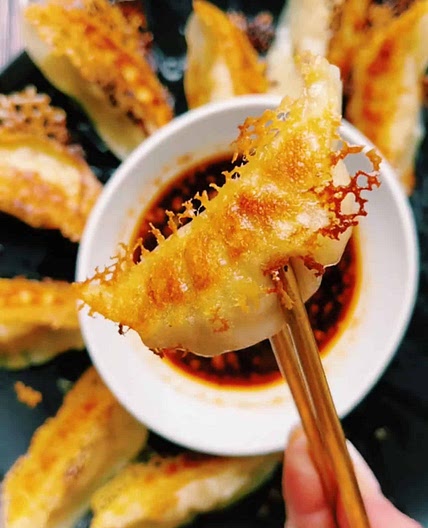
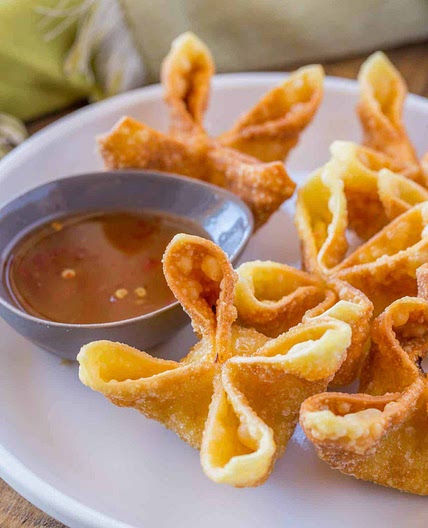
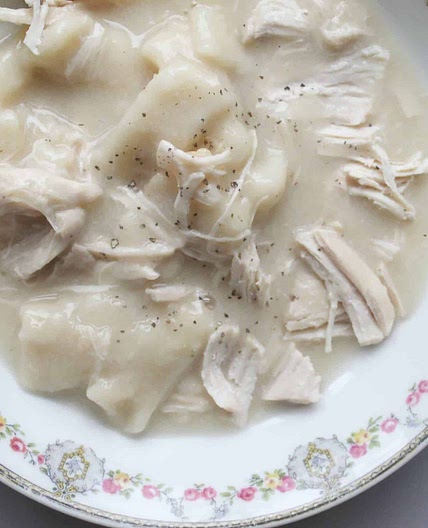
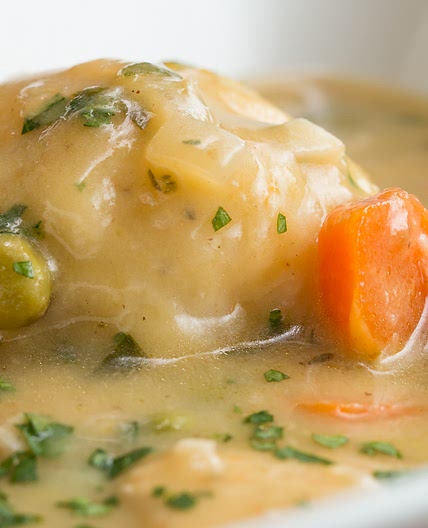




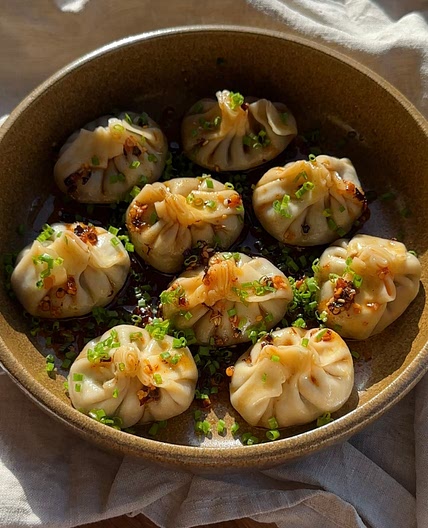
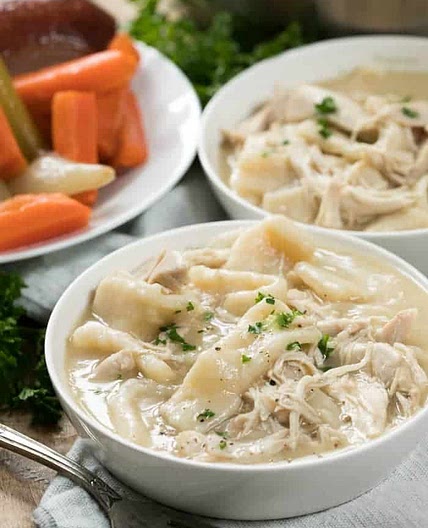
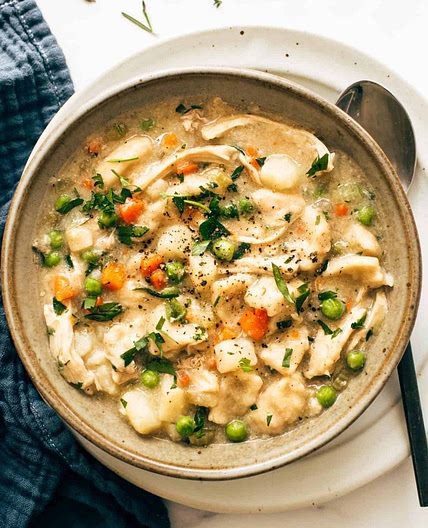
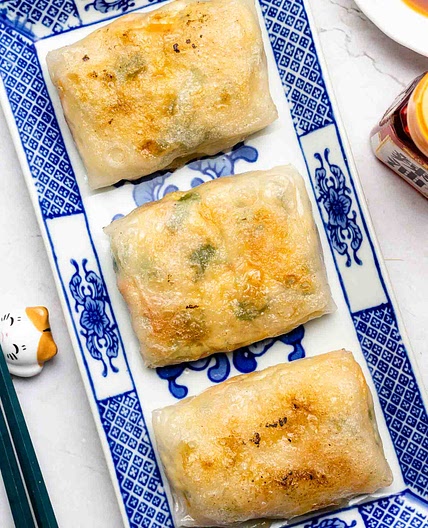



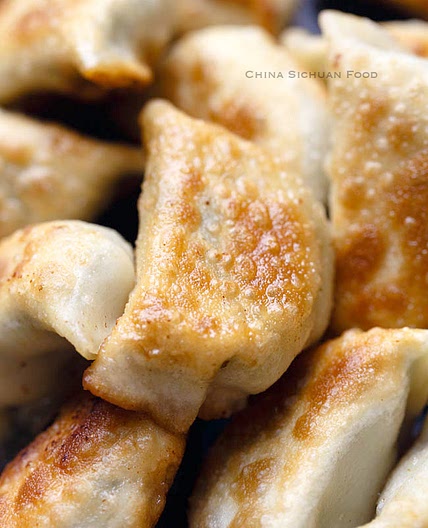

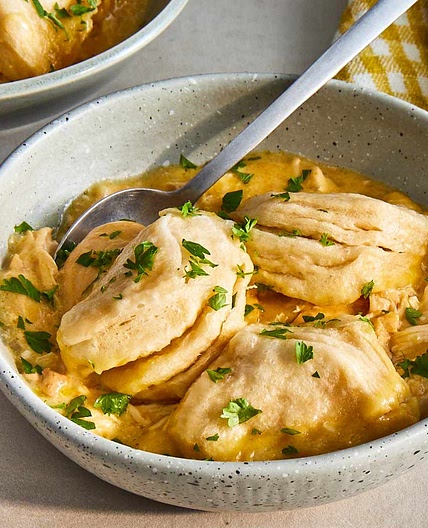


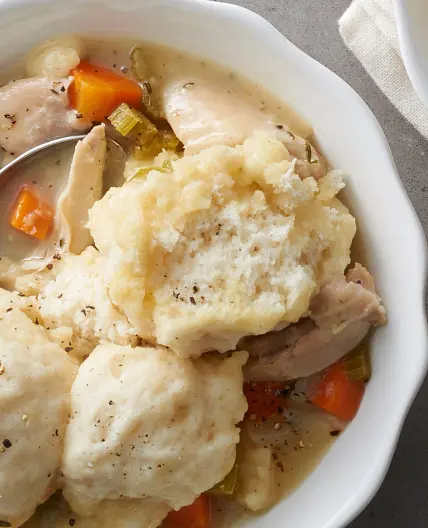



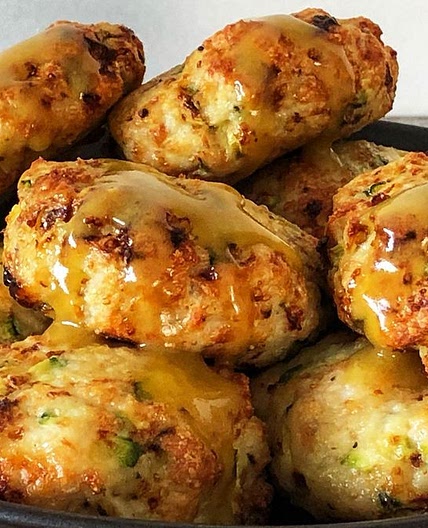
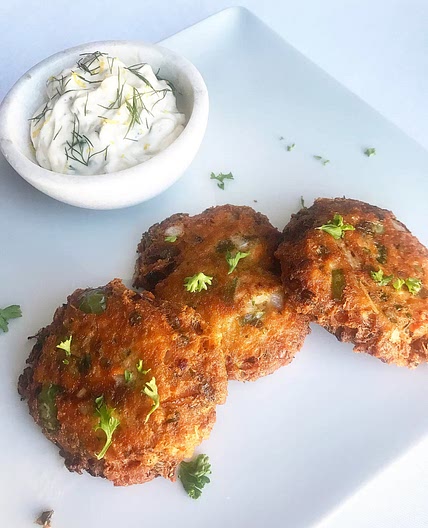
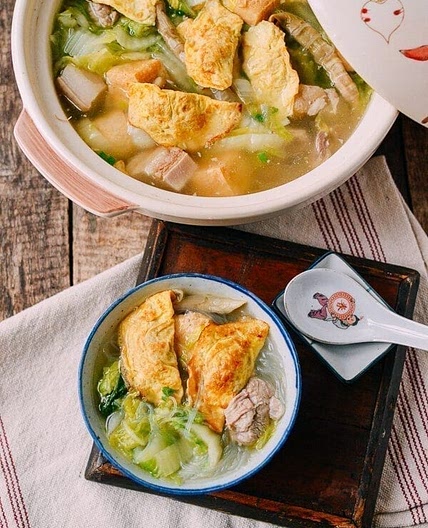
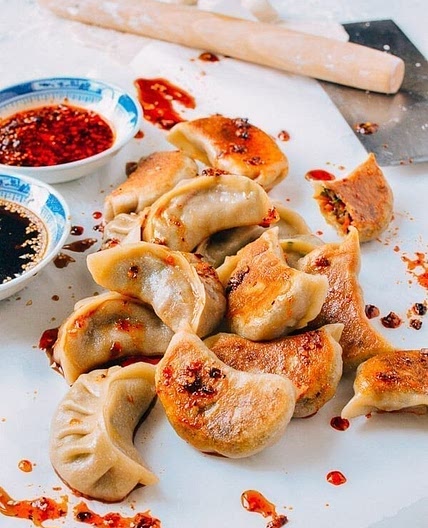

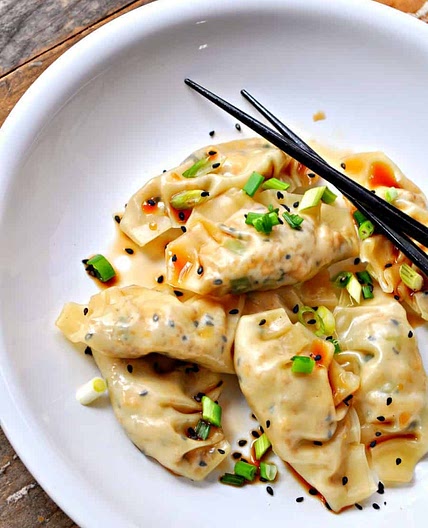


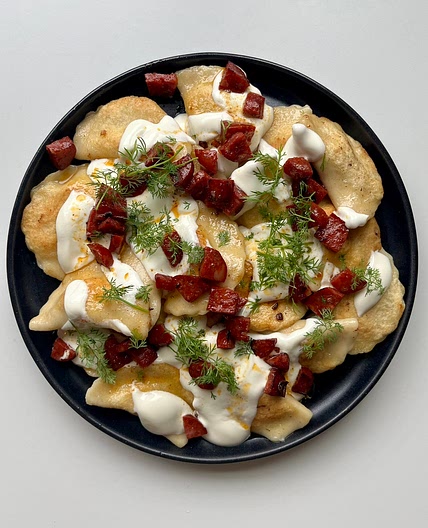

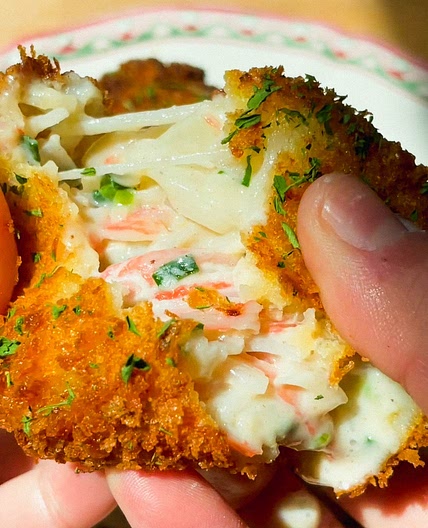


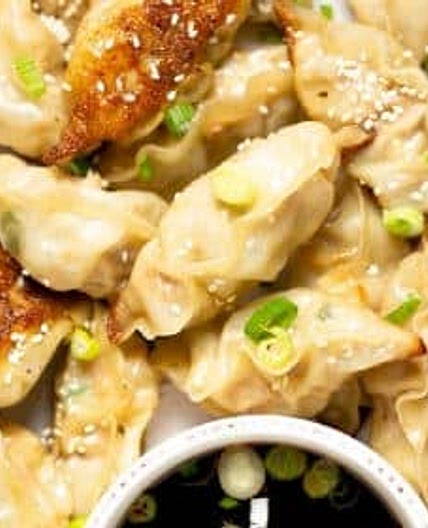
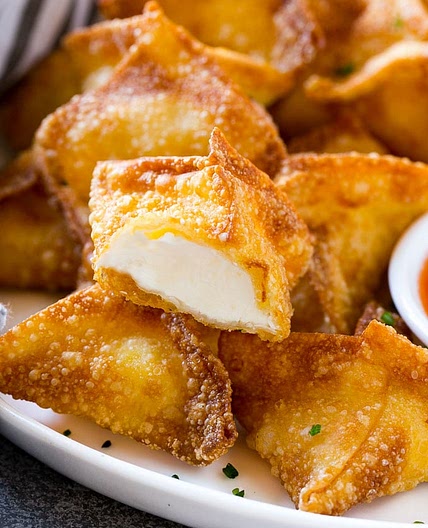
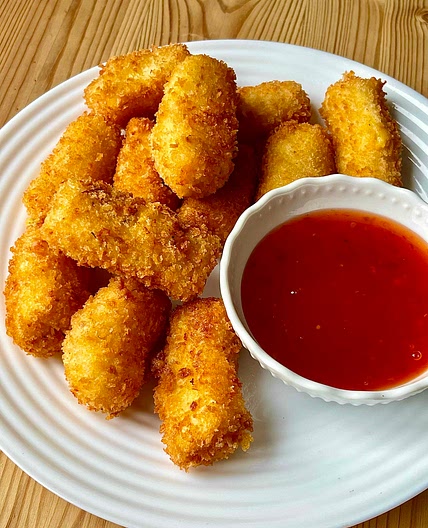
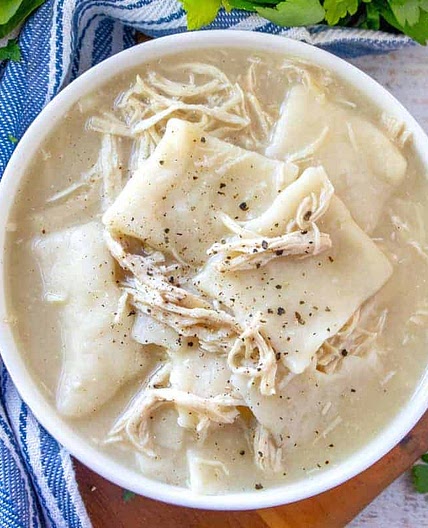

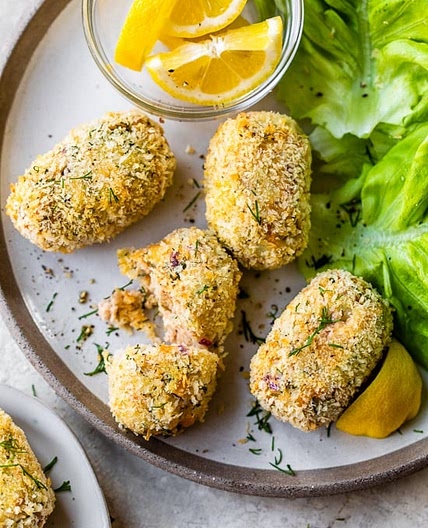
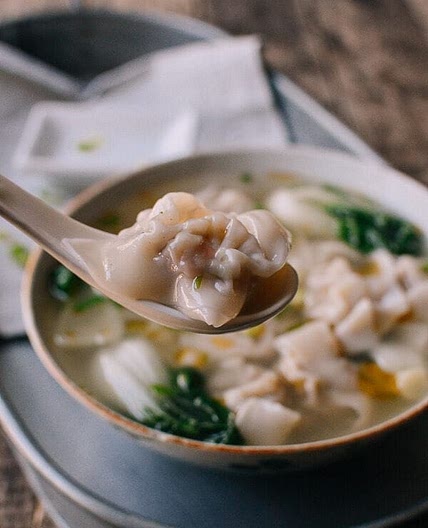

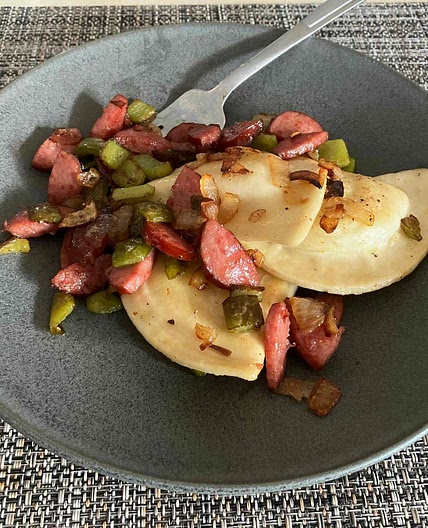
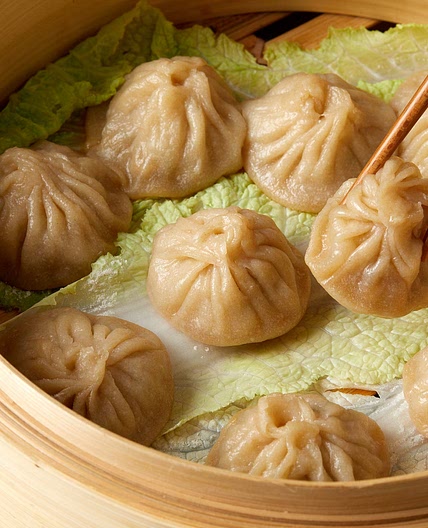
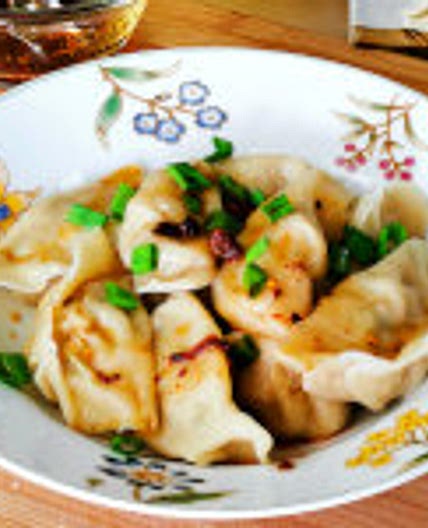
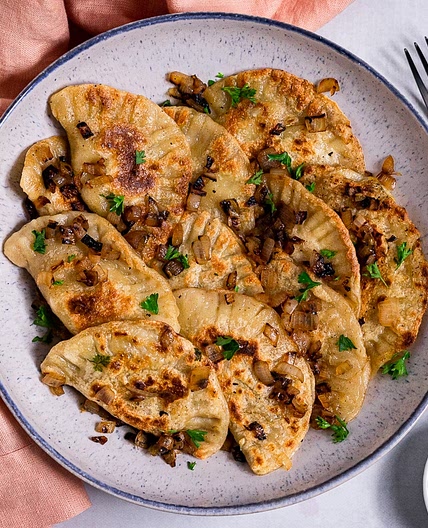
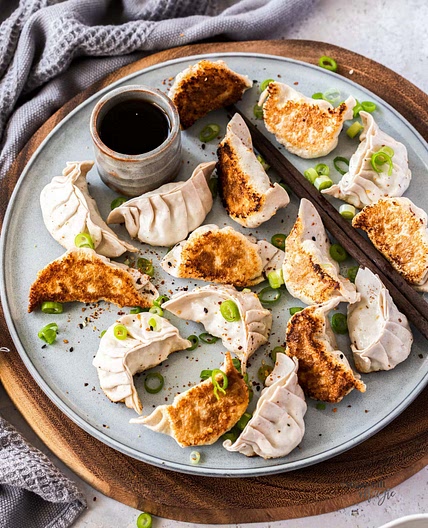
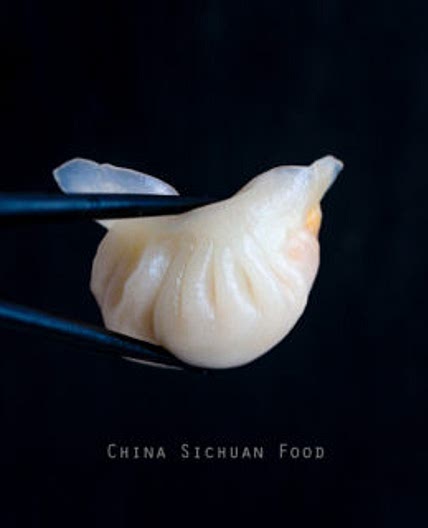
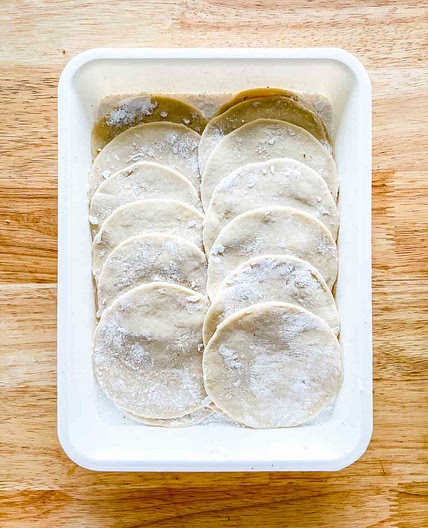
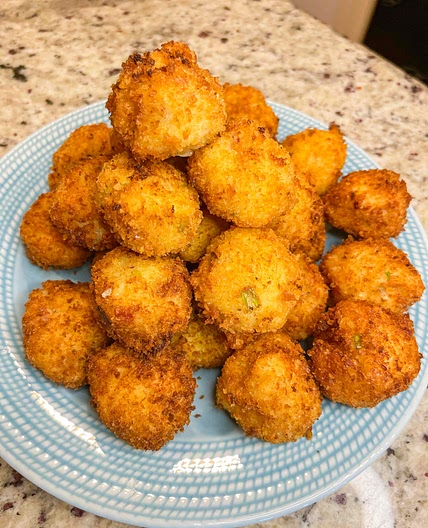

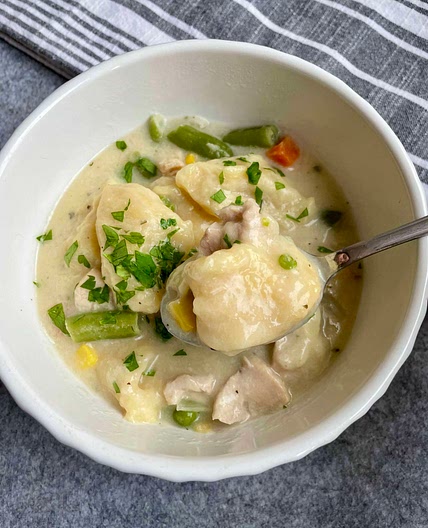
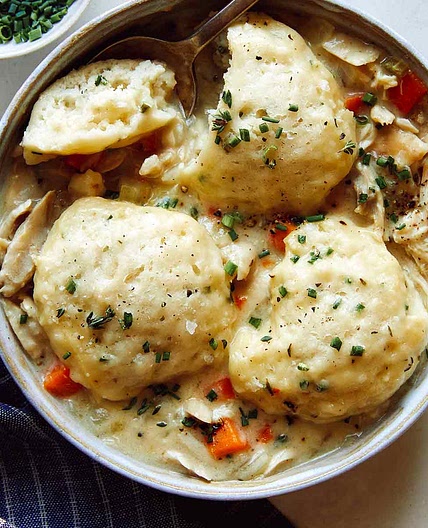
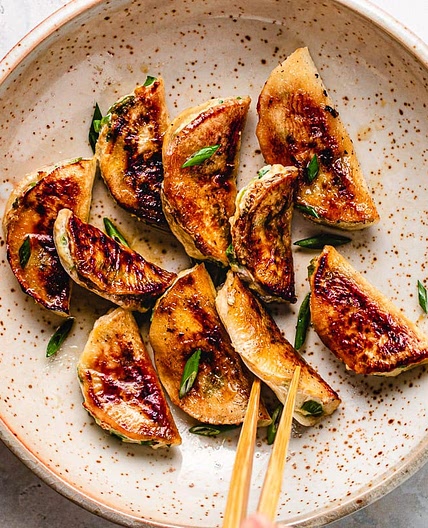




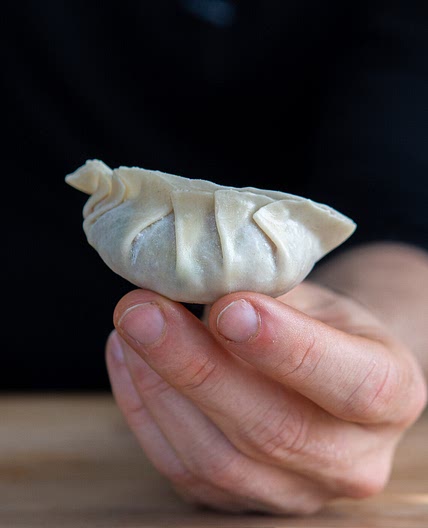
![Homemade Chicken Siu Mai [Chinese Open-Top Dumplings]](https://art.whisk.com/image/upload/fl_progressive,h_264,w_214,c_fill,dpr_2.0/v1686767817/recipe/9bbbbddf63c6efad0c0802adb6dd4134.jpg)

